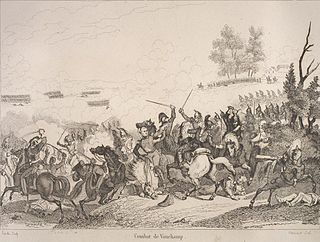
The Battle of Vauchamps was the final major engagement of the Six Days Campaign of the War of the Sixth Coalition. It resulted in a part of the Grande Armée under Napoleon I defeating a superior Prussian and Russian force of the Army of Silesia under Field-marshal Gebhard Leberecht von Blücher.
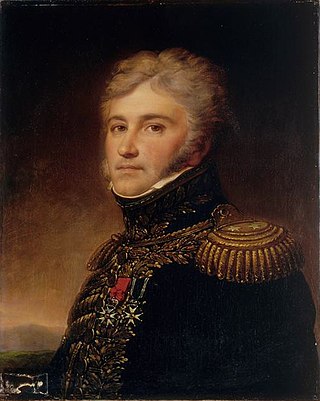
Général de division Louis, Comte Lepic was a French cavalry commander of the French Revolutionary and Napoleonic Wars. He eventually rose to the rank of général de division and held the prestigious command of the Grenadiers à Cheval de la Garde Impériale, the senior heavy cavalry regiment of the Imperial Guard. He was made a baron in 1809 and then became a count in 1815, after which he was known as Comte Lepic.

Louis-Vincent-Joseph Le Blond, comte de Saint-Hilaire was a French general during the Revolutionary and Napoleonic Wars, described by Lejeune as "the pride of the army, as remarkable for his wit as for his military talents."

Étienne-Marie-Antoine Champion, comte de Nansouty was a French cavalry commander during the French Revolutionary Wars who rose to the rank of General of Division in 1803 and subsequently held important military commands during the Napoleonic Wars.
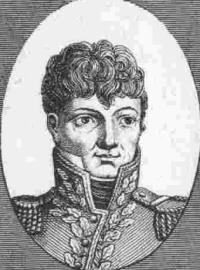
Jean-Baptiste Broussier was a French Divisional General of the French Revolutionary Wars and Napoleonic Wars.

Charles-Étienne César Gudin de La Sablonnière was a French general who served during the French Revolutionary Wars and the Napoleonic Wars.

Raymond-Gaspard de Bonardi comte de Saint-Sulpice was a French general of the French Revolutionary Wars and Napoleonic Wars, noted for his actions as a heavy cavalry commander and who became a Peer of France towards the end of his life.

Jean-Jacques Desvaux de Saint-Maurice, baron, was a French general of the Napoleonic Wars.

Jean-Barthélemot Sorbier, count,, was a French general of the Napoleonic Wars.

For the French milliner, see Claude Saint-Cyr, For the Marshal of France see Laurent de Gouvion Saint-Cyr
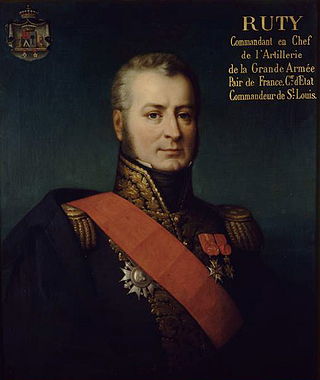
Charles-Étienne-François de Ruty, count, was a French artillery officer during the French Revolutionary Wars and Napoleonic Wars, who rose to the rank of general of division, state counsellor (1818) and Peer of France from 1819.
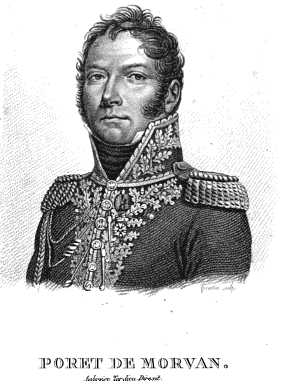
Paul-Jean-Baptiste Poret de Morvan, baron of the Empire, was a French officer during the French Revolutionary Wars and Napoleonic Wars, who rose to the rank of general.

Nicolas-Marie Songis des Courbons, Count of the Empire,, was a French artillery commander during the French Revolutionary Wars, who rose to the rank of General of Division in 1800 and served as commander of the Grande Armée artillery between 1805 and 1809, during the Napoleonic Wars.
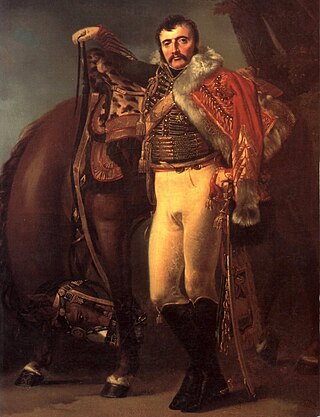
Claude-Étienne Guyot, count of the Empire, was a French general of the French Revolutionary Wars and Napoleonic Wars, noted for commanding cavalry.

Jean-Louis-Brigitte Espagne, Count d'Espagne and of the Empire was a French cavalry commander of the French Revolutionary Wars, who rose to the top military rank of General of Division and took part in the Napoleonic Wars.

Bernard-Georges-François Frère, Count of the Empire, was a French soldier of the French Revolutionary Wars, who later rose to the top military rank of General of Division, taking part in the Napoleonic Wars.
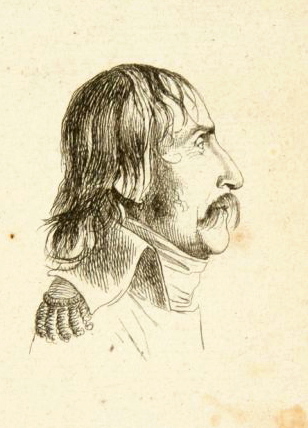
Count of the Empire Pierre-Louis Dupas was a French soldier who rose to prominence during the French Revolutionary Wars, was noted for his association with Napoleon Bonaparte, and rose to the top military rank of General of Division during the Napoleonic Wars. A fiery commander, often noted for bravery, Dupas was often wounded in action, triggering physical infirmities, which eventually forced him to retire from active service, at first temporarily, in 1809 and then permanently, in late 1813.

Count Michel-Marie Pacthod was a French officer during the French Revolutionary Wars and Napoleonic Wars, who rose to the rank of General of Division in 1808. A competent and brave infantry commander, his career was much affected by a 1795 incident, while he was the military commander of Marseille, and failed to come to the aid of Napoleon Bonaparte's family, which had taken refuge in the city.
Viscount Nicolas-François Roussel d'Hurbal, was a French soldier during the French Revolutionary Wars and Napoleonic Wars.

Baron Samuel-François Lhéritier de Chézelles was a French soldier who rose through the ranks during the French Revolutionary Wars and Napoleonic Wars, eventually gaining promotion to the military rank of Général de Division.

















